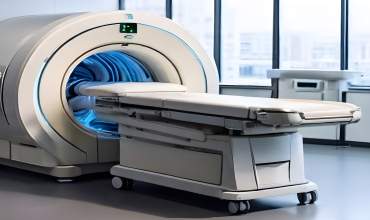Research concept
Theory of metal passivation
Metal surface contacting with solution of electrolyte in some definite
condition transformed to so called passive state. Study of this
phenomena on the border of metal – electrolyte plays an important role,
as they define the process of destruction of metal. And it is
thermodynamically favourable for metal to dissolve as a result of these
process. Such phenomenon was first observed by M. Faraday. This is one
of the main factor of stability of metal in aggressive environment.
It is known that, there is no unified model of passivation. The most
common and in first sight convincing conception of phase oxide is
connecting passivation with mechanical formation of thin film on metal
surface with oxide layer. However, potential of phase oxide formation
differ from critical parameter of polarised curve (pic. 1), specially
from potential of activation (a and passivation (П. In case of iron this
difference is 0,63 v. For this reason the phase film conception of
passivation cannot be taken in that from.
In case of metal passsivation determining role plays water molecule.
Some part of water molecule dissociate in the process of adsorption and
ion of oxygen breaking the bond with proton firmly block the most active
centre of metal surface. This may be considered as start of passivation.
In the theory of passivation some physical factor must be taken in
account. Most important of those are stated bellow.
.
Equilibrium exchange on the border with solution in which take part the
ion OH- and Oox.
Number of nonequilibrium vacancy in the passivaing oxide lattice.
Energetic inhomogeneity of metal surface.
Major factor of the process is inter phase difference of potential,
which is defined by composition of the solution. Depending on its value
the current of dissolution take the form:
Breaks on this curve is connected with the formation of thin protection
layer in sector II. Reaction of this passive layer formation is
The oxygen undertakes from molecules of water, and half metal from the
substrate of metal surface. As a result of formation of this layer the
current falls on 4-7 orders in a very narrow interval of potential
change (. After formation of a continuous monolayer there occur the
state of passivity III.
The question, how this passive layer is formatted was not studied. We
shall try to explain the process of passive layer formation and the
kinetic of the process.
.
,
the cluster is equilibrium, its critical size lkp surpasses few times
the sizes of building particles (molecules) of the layer. The
probability of its formation is defined by the work A of this process
,
With the condensation of the factor of crystallisation Wc , the
probability of crystal cluster formation Wk is
.
It is defined by the classical approaches, according to which the
formation of equilibrium crystal take place by consecutive connection of
building particles to the complexes, already available on surface M.
, i.e. growth or disintegration of crystal particles.
. These values represent quantity of the acts taking place in 1 cm2 of
the surface M for 1 sec. They are proportional to superficial
concentration na of particles of the given size and probabilities of the
elementary acts
.
Resulting speed of direct and return transitions
.
At balance state
Proceeding from this it is possible to find out
Further we shall define A1 and A2. Proceeding from this it is possible
to calculate the speed of cluster formation
With the help of this formula it is possible to define the laws of
formation of the passive layer on the sector II (in pic.1).
Then taking in to account the energetic inhomogeneity of metal surface
it is possible to find out the integrated current density
where (- bond energy.
by cluster,
Thus the processing of the first thin superficial layer of metal in
oxide is finished. Take place complete passivation of the surface M, the
sector II on the curve (fig. 1) is replaced by the sector III, for which
the new physical conditions must be taken in account. And further
researched may be done.
PAGE 1
PAGE 1
pic. 1
(ПП
(0
(П
IV
III
II
I
lg ia((a)
(а
Нашли опечатку? Выделите и нажмите CTRL+Enter




